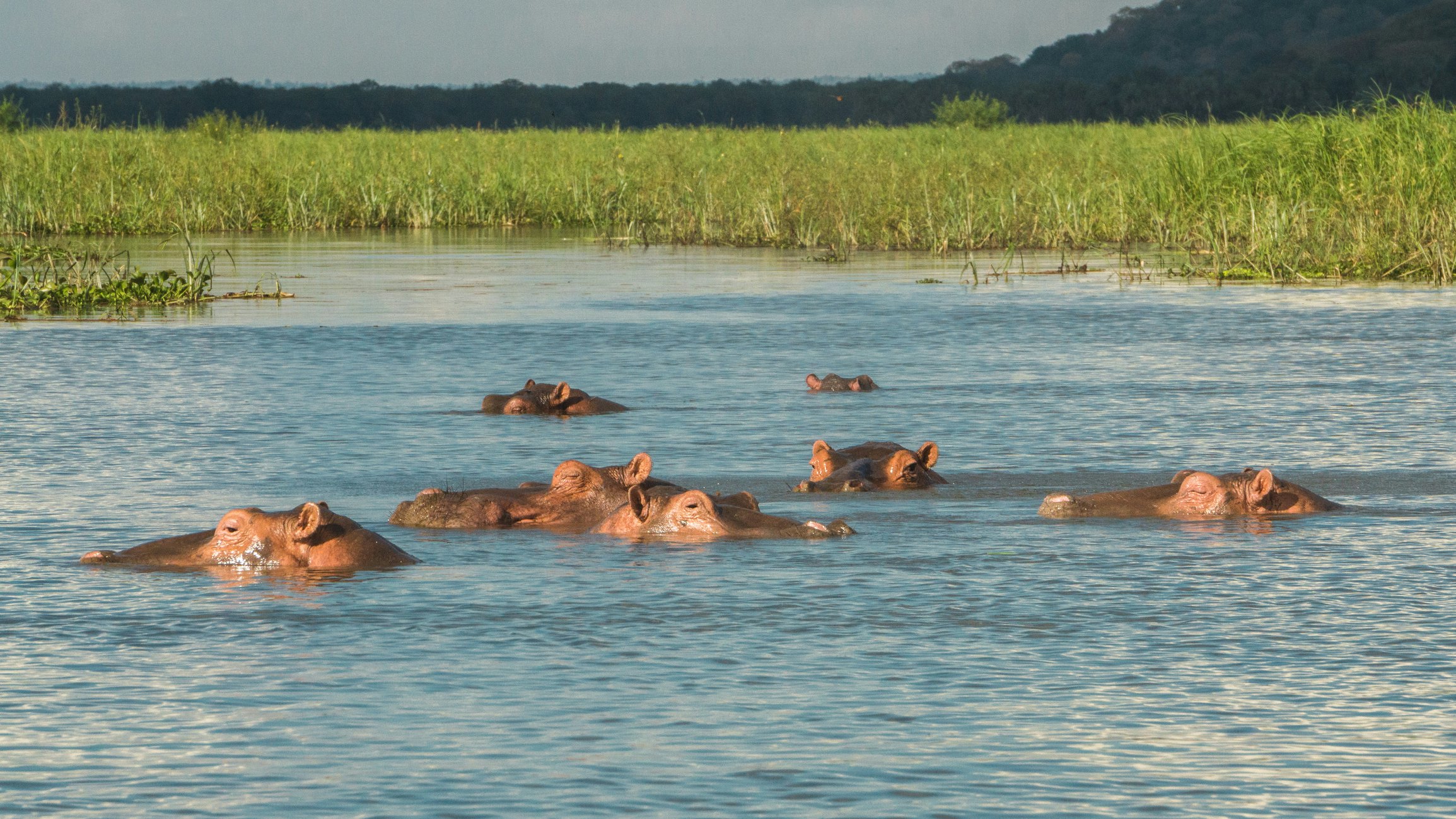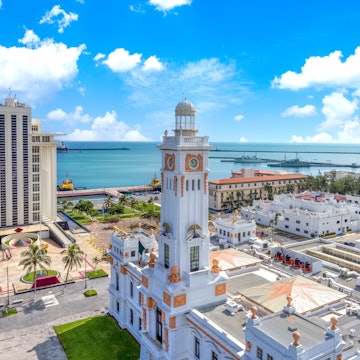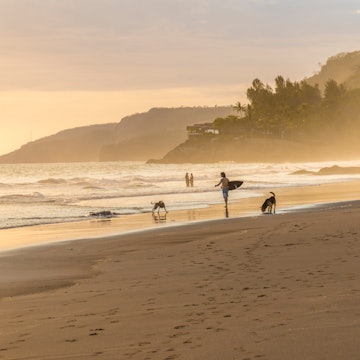
Malawi's 10 incredible national parks and reserves: wildlife, wilderness and water sports

Mar 2, 2022 • 8 min read

Experience the very best of Malawi's landscapes and wildlife, from Liwonde to Lake Malawi National Park © SAPhotog / Shutterstock
Malawi sits at the crossroads of three distinct ecological regions, and its 10 national parks offer vastly diverse experiences, both terrestrial and aquatic. Though it’s often overshadowed by its neighbors, Malawi is also an excellent safari destination, and the good news is that you’ll have much of the rugged wilderness to yourself.
The crown jewel, Lake Malawi, spans the length of the country, with marshland, flood plains, rivers, forests and hills filling in the rest of its corners. In the north, you can stand on the edge of the Great Rift Valley in Nyika National Park. In the central region, you’ll trace the history of Early Iron Age man in Kasungu National Park. In the south, you’ll float the Shire River in search of elephants on a boat safari in Liwonde National Park. The Big Five, exotic birds, a rare breed of antelope, and black rhinos, among many other species, call Malawi home.
Ready for an adventure? Here’s a quick guide to Malawi’s 10 national parks and wildlife reserves.
Find solitude and stunning scenery at Nkhotakota Game Reserve
Located in Malawi’s central region, Nkhotakota Game Reserve sprawls into the horizon beneath the rocky peak of Chipata Mountain. The rugged park spans roughly 1126km (700 miles) from the edge of the Great Rift Valley in the west to just a few miles shy of Lake Malawi. A tangle of rivers wend around wooded hills and across the region’s arid miombo woodlands before spilling into Lake Malawi.
More than 280 species of birds nest in Nkhotakota, and nearly 500 elephants were relocated there after African Parks took over management in 2015. Visitors will also find buffalo, sable, kudu among other large mammals, though they require effort to track in the vast expanse. For travelers who prefer open spaces and solitude, Nkhotakota has a lot to offer, especially with the recent opening of three professionally run lodges: Bua River Lodge, Tongole Wilderness Lodge, and Kachenga Bush Camp. Rafiki Safari Camp opened in 2019 just outside the reserve’s eastern border.

Vwaza Marsh Game Reserve is the top park to spot elephants
Southwest of Nyika, Vwaza Marsh Game Reserve occupies a key watershed between Lake Malawi and Zambia’s Luangwa valley. Critical for its biodiversity, Vwaza forms part of the Malawi–Zambia Transfrontier Conservation Area and serves as the base for Malawi’s Wildlife Research Institute, which focuses on elephants. Vwaza supports northern Malawi’s largest elephant population.
Open wetlands, marsh plains, grassland, and acacia forest provide habitat for 300 bird species and abundant game, from 17 pods of hippos in Lake Kazuni to buffaloes and elephants traversing the floodplains. It’s not the easiest park to explore in the rainy season because most parts get water-logged. Most travelers visit on group tours or private 4WDs with a guide during the dry season. Accommodations are basic but comfortable.
Kasungu National Park is the best place to see hippos and prehistoric sites
Though not typically on the Malawi first-timer's list, Kasungu National Park, the second largest park in the country, abounds with wildlife wandering its rivers and forest. The dominant type of ecosystem, called miombo, comprises sparse, open and dry forest that provides habitat for large mammals including elephants, antelope, zebra, leopard, and buffalo. Hippo enthusiasts can spot a large population of these creatures hanging in the lake. Two rivers, the Dwangwa and Lingadzi, cross through the park and support the ecosystem.
For visitors tired of the dawn wake-up call or those with a penchant for Iron Age history, a few archeological sites provide a contrast to game drives. A climb on Black Rock is a favorite with tourists for its breathtaking views. Heavy rains shutter the park in March, but the rest of the year, visitors can tour in their own vehicles.

See migratory birds and rare flowers at Nyika National Park
Established in 1965, Nyika National Park reigns as Malawi’s oldest and largest national park, covering roughly 3302 sq km (1275 sq miles). At 2438m (8000ft) above sea level on a plateau of the same name, Nyika borders Zambia and forms the edge of the Great Rift Valley.
Frequent rains (Nyika means “where the water comes from”) hydrate the rolling hills and woodland valleys into vivid shades of green. Rare orchids and wildflowers unfurl come summer, offering pollen and nectar to the insects and dazzling array of migratory and native birds. Aside from the park’s uncanny comparison to the Scottish Highlands, Nyika’s allure falls to its wildlife, a menagerie of zebras, lions, elephants and antelope. Because of its remote location, you must either charter a flight or prepare for a long overland drive in a high-clearance vehicle.
Lake Malawi National Park has wonderful beaches and water sports
How does a landlocked country have 1496km (930 miles) of shoreline, much of it golden sandy beaches with snorkeling, diving, and sailing? Lake Malawi, the literal centerpiece of the country, stretches from north to south with its heralded protected marine park at the southern end. Lake Malawi National Park, the world's first freshwater national park, boasts deep limpid water the color of the Caribbean Sea, a mountain backdrop, and an endemic species of colorful fish called cichlids.
Tourists flock here after city visits or bush trips to relax and take advantage of the tropical weather, especially on islands like Likoma or beach communities around Cape Maclear. From water sports and scuba diving to baboon spotting and hikes in the hills, there are plenty of things to do near Lake Malawi, especially if you have weeks to do it.
Go on a bike safari at Kuti Wilderness Reserve
Established in the 1990s, Kuti Wilderness Reserve, Malawi’s smallest reserve, encompasses a mere 20 sq km (7.7 sq miles). Kuti’s appeal stems from its low-stress walking and bike safaris. The lack of dangerous predators (no Big Five here) means you can pedal fearlessly while looking for zebras, kudu, and giraffes. Yellow baboons and velvet monkeys hang around the trees of the miombo woodland, while waterfowl flock to the wetlands and marshes.
The park sits 40 minutes due west from several beachfront lodges on Lake Malawi’s Senga Bay, making it an easy day trip or beach-and-bush combo.

Liwonde National Park is the best for boat safaris and Big Five viewing
Liwonde National Park is Malawi’s most famous and most popular national park, especially for its exhilarating boat safaris. Located just 5km (3 miles) from the main road from Lilongwe to Zomba, Liwonde is one of the Big Five parks and offers easy game viewing along the Shire River, which snakes through the park from north to south.
Liwonde is also one of the country’s best comeback stories. The stunning landscape of floodplains and lagoons, 1000-year-old baobab trees, and spiky borassus palms, all home to hundreds of bird species, along with crocodiles, hippos, zebra, antelope, and warthogs, deserved resuscitation after years of neglect. African Parks managed its revival brilliantly, helping to protect the country's last large elephant herd and endangered black rhinos while reintroducing cheetahs.
Experience remote wilderness in Mwabvi Game Reserve
The small and seldom-visited Mwabvi Game Reserve at the southern tip of Malawi appeals to wildlife enthusiasts who prefer off-the-beaten-path adventure. At 135 sq km (52 sq miles), this remote park can be accessed only by foot or 4WD. Because of smaller populations, sightings of sable, kudu, impala, and buffalo require a diligent eye. However, the setting alone thrills, especially for landscape photographers.
The reserve has plenty of scenic hikes to rocky outcrops with spectacular views. Imagine no roads – just endless vistas of mopane and acacia woodland, and mighty rivers cutting through deep gorges. The park remains open all year, but hikers will fare better in the dry season. A few camps and a lodge are the only accommodation options. Project African Wilderness partnered with the Malawian government to protect the reserve and develop the park’s ecotourism offerings.
See the Big Five in the magical Majete Game Reserve
Rivaling Liwonde National Park for conservation success, Majete Game Reserve has transformed from a degraded ecosystem devoid of forest, animals and thus tourists to a thriving park generating income for nearby communities. From the 1970s to the 1990s, poaching brought rhino, elephant, and lion populations to their knees. The dramatic restoration began in 2003 with the reintroduction of these key large mammals, which are now protected by a ranger force and employees from the surrounding villages.
Knowing your money supports a cause so valuable to both animals and people makes the visit to Majete magical. You'll have a chance to see the Big Five, whether in a boat, on foot, or in a 4WD, and if you're lucky, a giraffe. Thirteen were introduced in 2018.
Lengwe National Park is home to herds of Nyala antelope
Lengwe National Park's claim to fame is not the Big Five or splashy safari camps, but rather a spiral-horned species of antelope called nyala. A little fancier than your backyard white-tail, these pin-striped, shaggy-coated mammals are fond of this Lower Shire region. In fact, the reserve was created to protect the herd.
Lengwe covers roughly 907 sq km (350 sq miles), and its thick woodland houses some 300 bird species. In addition to the wildlife, Lengwe also offers beautiful scenery of rocky outcrops and mopane vegetation. During a daytime self-drive or walking safari, you’ll find baboons, monkeys, bush pigs, warthogs, and buffalo herds. If you book a guided night drive with a spotlight, you'll have a chance at finding leopards or hyenas stalking prey. The park doesn't get as busy as others, but with only one lodging option, visitors should book early during the high season.
You might also like:
The top 10 things to do in Malawi for a magical experience
Top 10 places to visit in Malawi
Malawi welcomes 17 black rhinos into Liwonde National Park












